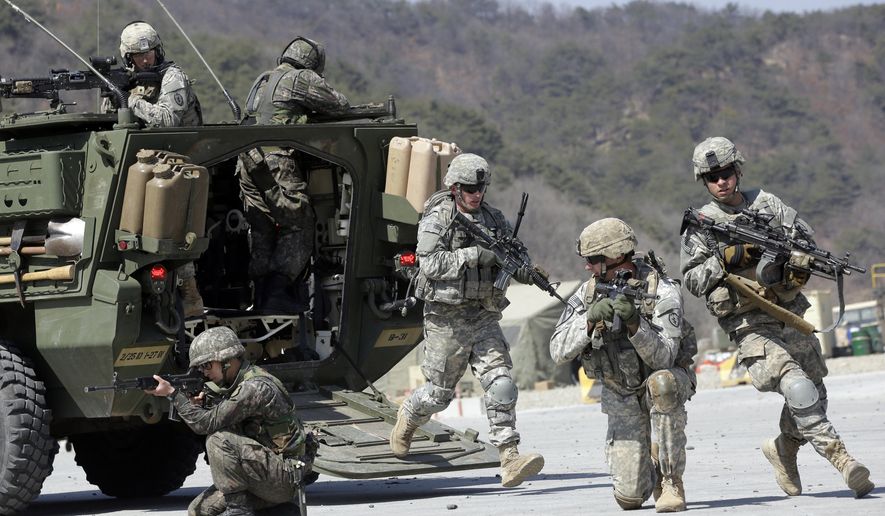Pentagon officials say countering enemy drone attacks is now one of their highest priorities, and defense contractors are lining up to meet the demand.
Just a week after a U.S. military outpost in Syria was hit in a drone strike believed to have been orchestrated by Iran, a defense contractor and a high-tech startup company announced they were joining forces to integrate counter-drone systems to Army combat vehicles.
General Dynamics Land Systems said they are teaming up with Epirus, Inc., to mount their Leonidas directed-energy system on the Army’s Stryker armored fighting vehicle, in an effort to defend U.S. troops against drone “swarms” and other emerging electronic threats.
The eight-wheeled Stryker is designed to carry an infantry squad to the battlefield. They were commonly used by Army units in Iraq and can be modified to support a variety of missions.
The U.S. once held a near-monopoly on military drone applications, but the world is fast catching up. Analysts say the deployment of relatively inexpensive Turkish and Israeli drones played a critical role in Azerbaijan’s quick victory over Armenia in the brief border war in the summer of 2020.
Pentagon officials have said U.S. troops are facing a growing threat as potential adversaries develop and purchase relatively inexpensive, yet lethal, drones. The Army’s Joint Counter-small Unmanned Aircraft Systems was established last year to develop the doctrine and training needed to address the problem.
Leonidas “is the only directed-energy weapon with a proven ability to counter swarming drones and execute precision strikes at range,” General Dynamics officials said in a statement.
According to the companies, integrating the Leonidas system with Strykers will allow them to work much more effectively alongside ground-based and airborne systems to deal with drone swarm attacks.
Other defense contractors have taken up the challenge to protect U.S. military ground formations against drone strikes. Arizona-based Raytheon has developed a 50-kilowatt high-energy laser weapon also mounted on a Stryker. During tests over the summer at Fort Sill, Oklahoma, soldiers were able to track, identify and engage a variety of targets, company officials said.
“In just a few days, soldiers went from training to operating the system and engaging targets to providing valuable feedback to our team that will help improve future systems,” Annabel Flores, vice president for electronic systems at Raytheon Intelligence & Space, said in a statement.
Raytheon’s system combines the acquisition and tracking equipment, the radar, and the high-energy laser and beam director and is designed to be used on Stryker combat vehicles operated by soldiers in the field, said Justin Martin, the company’s chief engineer for high energy lasers.
U.S. officials say they now believe that Iran was behind the Oct. 20 drone attack on the U.S. garrison at al-Tanf in southern Syria. There were no reported U.S. injuries. American troops are there to train and advise Syrian opposition forces as part of Operation Inherent Resolve, the U.S.-led operation to battle Islamic State forces in the area.
• Mike Glenn can be reached at mglenn@washingtontimes.com.




Please read our comment policy before commenting.